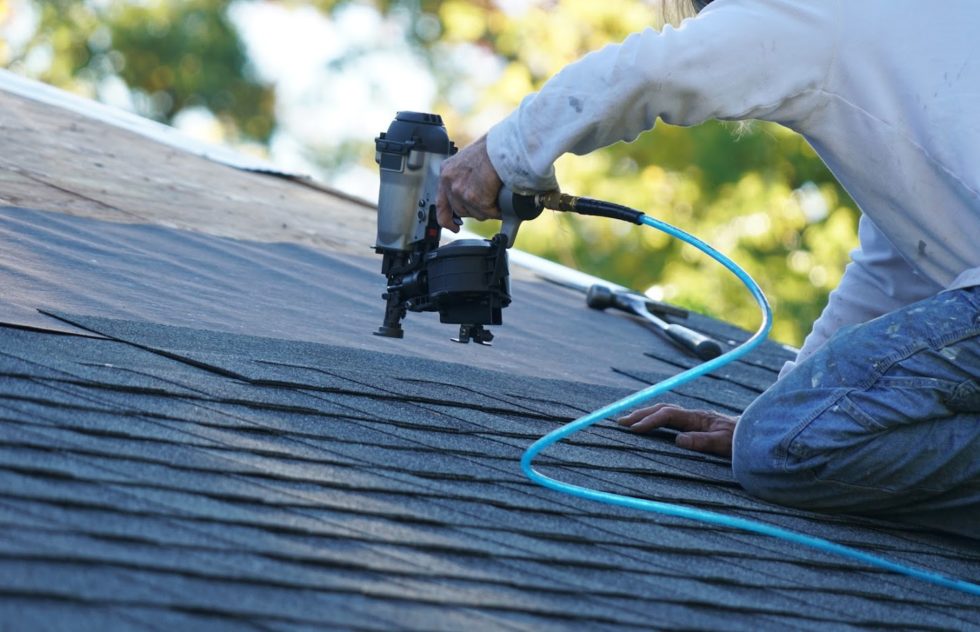Single-ply roofing is durable, but only if you get the installation right. Roofing contractors have a variety of techniques for the installation of these roofs. Different factors determine which technique is best for your house. Below are some of these installation techniques.
1. Ballasting
The ballasting technique relies on the weight of the ballast to hold down the roofing membrane in place. Roofing contractors use different materials to provide the necessary weight. Such materials include:
- River-washed stones
- Gravel
- Paving stones
All these materials will work — just use the available ones in your local area.
Differentiating Features
Each installation technique has salient features that differentiate it from the other techniques. Below are some of the salient features of ballasting:
- Ballasting is the cheapest installation method for single-ply roofing.
- Ballasting only works with strong roofs that can bear the ballast’s weight, which can be as high as 10 to 12 pounds per square foot.
- Ballasted roofs can also serve as a rooftop garden or relaxation area.
- The ballast provides additional ultraviolet (UV) protection to the roofing system.
- The design works best on flat roofs.
Make sure you have a professional handle the installation of ballasted roofs to avoid any mistakes or problems.
2. Mechanical Attachment
Whereas ballasting relies on the weight above the membrane, mechanical attachment physically connects the membrane to the roof. The roofing contractor uses individual fasteners to secure the single-ply roofing membrane to the decking. Some of the fasteners the contractor can use include:
- Nails
- Screws
- Augers
The choice of fastener depends on the material of the roof decking. The roofing contractor must seal around the fasteners to prevent roof leaks.
Differentiating Features
Just like ballasting, mechanical attachment also has outstanding features:
- The installation process is relatively quick.
- The right number of fasteners is necessary to reduce the risk of blow-offs.
- The design is suitable for existing roofs since it doesn’t add too much weight to the roof.
- The roof slope doesn’t affect the installation process.
Mechanical attachment also carries a risk of membrane puncture. Thus, the contractor will pour water on the roof to assess the membrane’s integrity after installation.
Note that mechanically attached membranes are not suitable for foot traffic. Thus, you should avoid rooftop activities on this type of roof. Ask the contractor for a walkway sheet on top of the membrane to protect it from foot traffic damage.
3. Full Adhesion
Other than ballasting and mechanical attachment, you can also use an adhesive to hold the membrane in place. This technique makes sense if your roof cannot handle mechanical attachment because you want to avoid any form of roof penetration. Suitable adhesions include:
- Asphalt
- Solvent-based adhesives
- Water-based adhesives
Again, the substrate material may determine the suitable adhesive. Note that some membranes don’t require additional adhesives. Such membranes have their own adhesives, so you just peel and stick them on the roof substrate.
Differentiating Features
Full adhesion gives you a continuous roof surface, which some people consider attractive. Here are some other notable features of this installation technique:
- The roof is suitably resistant to uplift forces since every surface of the membrane adheres to the substrate.
- The roof features a low risk of leakage since the installation process doesn’t involve membrane puncture.
To make sure you get these benefits of adhesion roofs, make sure to hire a professional to get the job done.
Empire Roofing and Restoration will review your house, roofing needs, and budget to help design an appropriate roof. We have over 30 years of experience in the roofing industry, and you can rely on our professionalism. Contact us for a quote on single-ply roofs or any other roofing services you may need.

